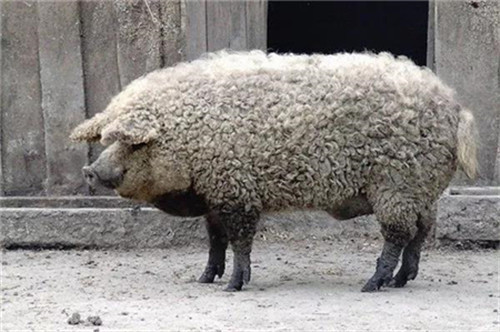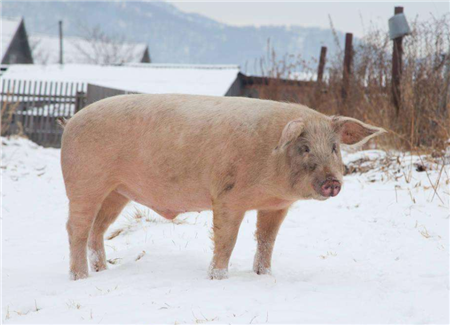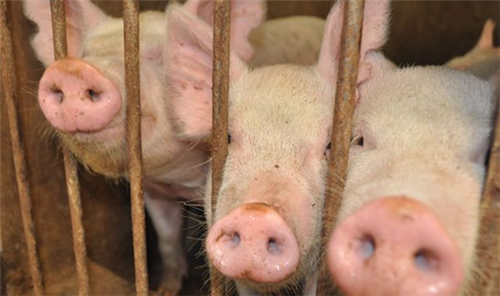Don't count on single prevention and control: the causes of respiratory diseases in pigs are complex.
Pig respiratory diseases have always been seriously affected and perplexed the healthy, sustainable and efficient development of pig production due to the current situation of many causes, complex manifestations, difficult diagnosis and treatment, and poor prevention and control effect of single measures. Based on the etiology and pathogenesis of porcine respiratory diseases, the author puts forward some suggestions for comprehensive prevention and control of this disease.
In the process of pig production, porcine respiratory diseases are often caused by the interaction of many factors (virus, bacteria, mycoplasma pneumoniae, poor feeding and management conditions, etc.), so it is often called "porcine respiratory syndrome". Pig farms often plant "bombs" due to lack of biosafety measures or purchase of recessive infected pigs with lax quarantine, and detonate "bombs" because of poor feeding and management or malnutrition.
General situation of epidemic
Because coughing and sneezing of diseased pigs can cause pathogens to be excreted into the surrounding environment with respiratory secretions, and then infect other healthy pigs through the respiratory tract, pigs of any breed, age and sex can become sick if effective prevention and treatment measures are not taken. However, most of the outbreaks occurred in 6-10-week-old nursing pigs and 13-20-week-old growing pigs, the morbidity was generally 30-65%, and the case fatality rate was 15-85%. The younger the pig was, the higher the mortality was, and the reaction was even worse when the feeding conditions were bad.
The main causes of respiratory diseases
1. Infectious factors
Virus: porcine reproductive and respiratory syndrome virus, swine influenza virus, classical swine fever virus, pseudorabies virus, circovirus, porcine respiratory coronavirus and so on.
(2) bacteria: there are mainly Streptococcus, Haemophilus parasuis, Pasteurella multocida, Actinobacillus pleuropneumoniae and so on.
(3) Mycoplasma: Mycoplasma hyopneumoniae, etc.
(4) parasites: Toxoplasma gondii, Ascaris lumbricoides, etc.
(5) others: porcine eperythrozoon, etc.
Many pathogens (such as Mycoplasma suis pneumonia, porcine reproductive and respiratory syndrome virus, swine influenza virus, classical swine fever virus, pseudorabies virus, circovirus, porcine respiratory coronavirus, bronchial septicemic Bordetella, etc.) can directly destroy the porcine respiratory defense system and cause damage and failure of the respiratory immune system. As a result, it loses the function of removing airborne foreign bodies (including pathogenic microorganisms, harmful particles and body metabolites). This makes the infection of other pathogens (such as Streptococcus suis, Haemophilus parasuis, Pasteurella parasuis, Pasteurella pleuropneumoniae, etc.) easier, and the clinical manifestation and harm are also significantly intensified.
two。 Non-infectious factors
The non-infectious factors are mainly feeding and management conditions, which mainly refer to nutrition level, feeding density, air quality, dust, temperature, humidity, conversion frequency, mycotoxin and unreasonable vaccine immunity and antibiotic use, and so on. In addition, pigs from different sources or different ages are raised in mixed groups, and continuous production in barracks, which are often the causes of the outbreak of respiratory diseases in pigs.

3. Comprehensive factors
In fact, the above causes are not isolated, they often promote each other and cause and effect each other. As a result, the etiology of porcine respiratory diseases becomes extremely complex, which is also the reason why it is difficult to diagnose, prevent and cure porcine respiratory diseases.
Clinical symptoms of respiratory diseases in pigs
In the initial stage, the main manifestations of diseased pigs are dry cough and asthma, especially when suddenly startled in the early morning or when the breeders drive pigs, their body temperature is generally normal, and their appetite and spirit do not change much, so they are easy to be ignored.
With the development of the disease, diseased pigs may have stiff standing, arched back, neck extension, drooping head, severe cough or spastic paroxysm, obvious abdominal breathing, severe exophthalmos, and cyanosis at the end of the visual mucosa or limbs. Acute cases are often accompanied by varying degrees of fever, and they often die suddenly due to extreme difficulty in breathing or stress; most pigs change from acute cases to subacute or chronic cases after "experience" treatment. the affected pigs showed progressive weight loss, enlarged body surface lymph nodes, large immune side effects and failure of diagnosis and treatment experience. If the feeding conditions are poor, the density is high, the adverse stress is many, and the treatment measures are messy, the morbidity, mortality and clinical manifestations are more serious.
Major pathological changes of respiratory diseases in pigs
All the diseased pigs developed pneumonia in varying degrees. Autopsy of 6-and 10-week-old pigs showed diffuse interstitial pneumonia and extensive enlargement of lymph nodes, pulmonary hemorrhage, sclerosis (unatrophic rubber lungs) and plaque-like lesions (gray-white necrosis and brown bleeding plaques). Individual lungs have suppurative foci, diseased pigs have mixed infections in varying degrees, and some pigs have extensive polyserositis (many fibrin exudation in chest and abdominal cavity, even cause adhesion). Some lung lesions are similar to porcine mycoplasma pneumonia.
In addition to lung lesions, some diseased pigs can also see nostril bleeding or blood foam, throat bleeding, edema, tonsil swelling, bleeding, lymph node enlargement, bleeding, tracheal mucus or foam increase, or even with blood.
Comprehensive Prevention and Control of Respiratory Diseases in Pigs
Due to the complex etiology of respiratory diseases in pigs, a single measure can not be expected to empty the disease. Combined with the specific conditions of the sick pigs, taking comprehensive measures to deal with the symptoms may be able to achieve the effect of "getting twice the result with half the effort":
1. Adhere to self-propagation and self-cultivation; if introduction is needed, it should be strictly quarantined. Isolate and observe for at least one month and then reunite with the group, and try to avoid rashly rearing pigs from different sources or with different ages.
two。 Strengthen feeding and management. Avoid bad stress such as feed mildew, thief, frequent group conversion / mixing / refeeding / injection, reduce dust, maintain reasonable feeding density, provide balanced feed nutrition, and do a good job of cleaning and environmental disinfection.
3. Many factors, such as serious environmental pollution, poor safety of feed and drinking water, high infection pressure of various pathogens (including vaccine pathogens), malnutrition, frequent stress and so on, make the pig population like old cattle and overburdened. The immune system of pigs is often in the "hand-to-hand combat" of overload operation, so that the immune system is damaged or paralyzed, resulting in immune failure. In order to reduce the immune side effects and improve the effect of vaccination, it is necessary for pigs in "sub-health" to take measures of "internal disinfection" and "short-term optimal feeding" before immunization.
(1) in vivo disinfection: combined with the clinical manifestations and past drug use records of pigs, drug prevention and health care should be carried out reasonably to solve the problem of "famous and high fever of pigs" in pig production, and at the same time effectively release immune space. reduce the interference of adverse factors such as wild bacteria / strains, mycotoxins and adverse stress on specific immunization. In short, we should try our best to make the pig immune system operate in an orderly manner, reduce the burden on the immune system, and prevent "overload" operation.
(2) short-term preferential feeding: under the condition that the animal body is stressed or the immune system is stimulated by foreign bodies (such as pathogenic microorganisms, mycotoxins and other non-self-substances), all resources will be mobilized for self-protection at the first time. Amino acids, vitamins, electrolytes and oligosaccharides are the basic nutrients of the body's metabolism. if they are not replenished timely and effectively, the body will inevitably be damaged because of running out of ammunition, and its immunity and anti-stress ability will be greatly weakened. to form a vicious circle.
4. Combined with the epidemic situation of the epidemic disease in our own pig farms and surrounding areas, we should select safe and efficient vaccines, and formulate and implement reasonable immunization procedures, especially to make sows maintain a good state of specific immune protection and provide protection for the health of piglets. Pig reproductive-respiratory syndrome positive pig farms should be even more so, with the mentality of "dancing with the blue", seriously implement various measures conducive to improving the physique of pigs. That is, all measures conducive to improving the physique of pigs are necessary to implement, pigs do not want, do not apply to pigs.
5. It is necessary to formulate and implement drug prevention and health care for sows before and after delivery and pigs before and after birth, castration, weaning, herding, herding, restocking, immunization, transportation, sudden change of weather and other adverse stress.
- Prev

Diarrhea on suckling pigs, this method absolutely works!
Diarrhea on suckling pigs, this method absolutely works!
- Next

How to treat pig disease: what are the methods for diagnosing porcine mycoplasma pneumonia?
How to treat pig disease: what are the methods for diagnosing porcine mycoplasma pneumonia?
Related
- On the eggshell is a badge full of pride. British Poultry Egg Market and Consumer observation
- British study: 72% of Britons are willing to buy native eggs raised by insects
- Guidelines for friendly egg production revised the increase of space in chicken sheds can not be forced to change feathers and lay eggs.
- Risk of delay in customs clearance Australia suspends lobster exports to China
- Pig semen-the Vector of virus Transmission (4)
- Pig semen-the Vector of virus Transmission (3)
- Five common causes of difficult control of classical swine fever in clinic and their countermeasures
- Foot-and-mouth disease is the most effective way to prevent it!
- PED is the number one killer of piglets and has to be guarded against in autumn and winter.
- What is "yellow fat pig"? Have you ever heard the pig collector talk about "yellow fat pig"?

